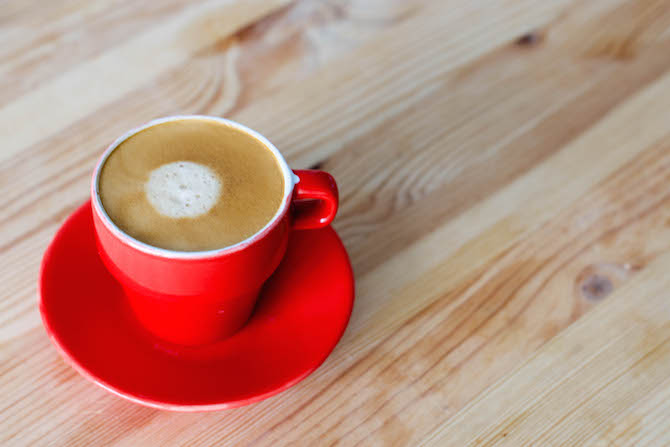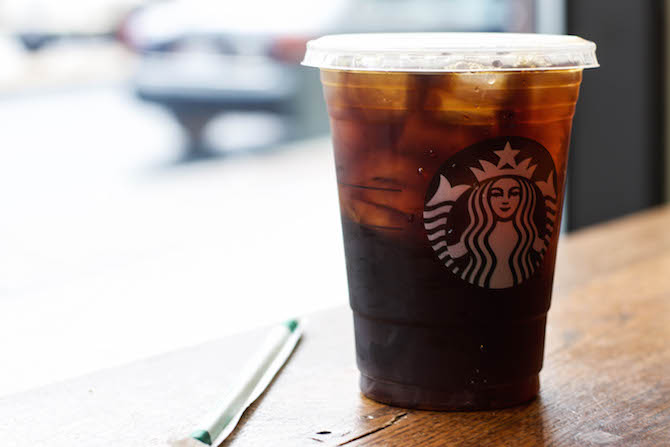I’m not entirely sure if I’m proud or ashamed to admit that I can say I’ve been regularly drinking coffee for nearly 10 years. As an almost college graduate, that puts the start of my coffee drinking days somewhere between 7th and 8th grade.
Regardless, every morning since 2004-ish, the first thing I’ve done upon waking up is stumble my way over to the coffee maker to satisfy my caffeine craving. My coffee preferences were pretty unchanging for the longest time – either a cup of dark roast with a healthy splash of half and half and two sugars, or a nonfat latte, also sweetened.

Photo by Asia Coladner
Although I drank coffee all through high school, college was when I really started to up my intake. By the end of freshman year, I was averaging somewhere around four cups a day. During midterms and finals, that number could double.
It took me an embarrassingly long time to realize that not only was I now consuming more caffeine than ever, but I was also mindlessly gulping down an unnecessary amount of extraneous liquid calories, fat, and sugar.
This habit was exacerbated by the large number of cafés found on and near campus and their enticing menus filled with decadent drinks like mochas and dirty chais.
But those treats add up. That pumpkin spice latte you look forward to every fall? 260 calories and 45 grams of sugar for a 16-oz. made with nonfat milk. A 20-oz. white mocha – also made with nonfat milk – has 450 calories before adding whipped cream. That’s only 17 calories fewer than a Big Mac.

Photo by Asia Coladner
In comparison to specialty drinks, a plain cup of coffee with just cream and sugar may seem harmless, but every packet of sugar (roughly equivalent to a teaspoon) adds 15 calories, and each tablespoon of half and half adds another 20. This means that four coffees with two sugars and two tablespoons of half and half was tacking on an extra 280 calories per day.
I’ve made many a pledge to scale back my coffee consumption as a means of avoiding these added calories, but I’ve come to terms with the fact that it’s just not going to happen – I like too many things about drinking coffee. Earlier this year, however, I finally came up with a new resolution that I think I can actually keep: to start drinking my coffee black.

Photo by Asia Coladner
It wasn’t easy at first, but I discovered a few tricks along the way that helped make the process easier. If you’re looking to cut down on coffee-related calories, here are a few of my recommendations on how to do it:
- Baby steps – don’t attempt to cut out all milk and sugar all at once. The shock to your taste buds will not be enjoyable. I chose to cut out all sweeteners first, and then slowly eased from half and half to whole milk, then to skim or almond milk, and then finally to no milk. Allowing yourself to adjust gradually is important.
- Go the express route – espresso, the base of those specialty drinks like lattes, is highly concentrated in both flavor and caffeine. Think of it as the difference between taking a shot vs. chugging a beer.
- See the light – lighter roasts of coffee tend to be less bitter and therefore not need any milk or sugar to help drown out that unpleasantness.
- Treat yourself – but only occasionally. If I’m really craving a cappuccino one morning, I’ll get one, but I’ll make sure that it’s the smallest size available and that it’s my only one of the day.
It’s only been a few months since I’ve made this change, but I’m happy with my decision so far. I don’t feel like I’m overindulging whenever I have a cup of coffee. And while it’s definitely not for everyone, I highly recommend at least giving it a try if you’re at all concerned about the toll your coffee consumption is taking on your health.
Have a sudden need for caffeine? Check out these articles for more:

